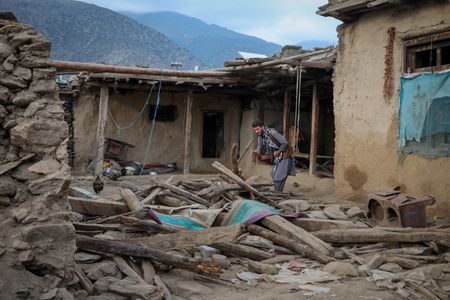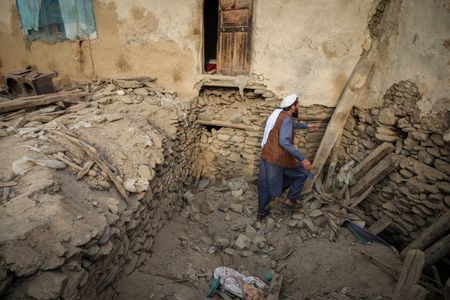(Reuters) -More than 1,400 people were killed and over 3,100 injured after a 6.0 magnitude earthquake struck Afghanistan around midnight on Sunday.
As rescue efforts continue, here is a look at why Afghanistan experiences frequent tremors, and how their impact can be reduced:
ARE EARTHQUAKES COMMON IN AFGHANISTAN?
Hemmed in by rugged mountains, Afghanistan is prone to a range of natural disasters, but its earthquakes cause the most fatalities, killing about 560 people on average each year and causing annual damages estimated at $80 million.
Studies indicate at least 355 earthquakes with a magnitude higher than 5.0 have hit Afghanistan since 1990.
WHY IS AFGHANISTAN PRONE TO TREMORS?
Afghanistan is located on the edge of the Eurasian tectonic plate, which shares a transgression zone with the Indian plate -implying the two may converge or brush past each other – and is also influenced by the Arabian plate to its south, creating one of the world’s most tectonically active regions.
The northward movement of the Indian plate and its thrust against the Eurasian plate is usually responsible for Afghanistan’s numerous quakes.
WHICH AREAS ARE VULNERABLE?
Eastern and northeastern Afghanistan, especially regions along its borders with Uzbekistan, Tajikistan, and Pakistan, are particularly prone to earthquakes.
This includes the heavily populated Kabul city, which has the highest average estimated damage due to earthquakes, amounting to $17 million every year, according to a study.
Earthquakes are also particularly dangerous in Afghanistan’s mountains where they can trigger landslides, exacerbating loss of life and property.
WHICH WERE AFGHANISTAN’S WORST EARTHQUAKES?
Afghanistan has recorded around 100 “damaging” earthquakes since 1900.
Among the worst in recent years was a magnitude 6 quake in 2022 that killed 1,000 people. Multiple quakes in one month in 2023 together killed 1,000 people and destroyed entire villages.
One of Afghanistan’s largest earthquakes, with a magnitude of 7.5, struck in 2015, killing 399 people in Afghanistan, Pakistan and India.
Some of the greatest devastation was seen in 1998 as two earthquakes shook Afghanistan within three months – the first killing 2,300 people and the second 4,700.
HOW CAN THE COUNTRY BUILD RESILIENCE?
Studies recommend new structures be built in an earthquake resistant way and existing buildings be retrofitted to reduce chances of collapse.
Better monitoring and early warning systems must also be created for more timely alerts, while fault lines should be mapped using geospatial and remote sensing technologies to enable relocation of people in vulnerable areas, they suggest.
(Compiled by Sakshi Dayal; Editing by YP Rajesh and Ros Russell)












